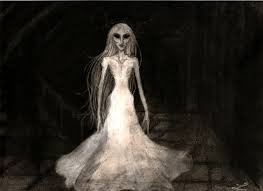Torbay’s most notable ghost is that of the Spanish Lady of Torre Abbey.
The back story to the supposed haunting begins in 1588 when the Nuestra Senora del Rosario became among the first of the Spanish Armada invasion force to fall victim to the English fleet – that’s the surrender below. Overall, contemporary Spanish records state that 65 ships survived the Armada and 65 were lost. Of the 30,000 soldiers and crew in the Armada probably 20,000 died during the voyage; of wounds, by execution (by the English in Ireland), but mostly of starvation and disease – it was said that there was no noble family in Spain that did not lose a son in the Armada.
The captured ship was towed to nearby Torbay where the crew were landed, probably on Abbey Sands.
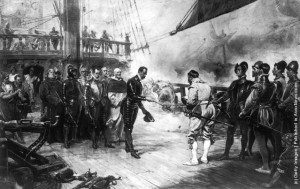
Drake sent the commander of the Rosario, Don Pedro de Valdés, to the Queen while the other 397 prisoners were held in Torre Abbey’s tithe barn, which subsequently became known as the Spanish Barn.
Local people were understandably hostile to the new arrivals – from across the Bay they came to see the captives and there were angry demonstrations. A letter to the Privy Council on July 27 reads: “The charge of keeping them is great, the perell greater, and the discontent over country greatest of all that a nation be so mitche misliking unto them should remayne amongst them.” It was accordingly decided to relocate the prisoners quickly and after a stay of around a fortnight they were sorted into, “those of name and quality” and, “the rest of baser sort,” and sent out of the Bay.
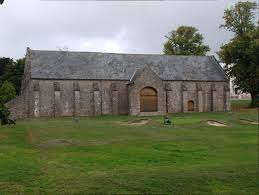
It was in the years that followed that the myths and legends of the Spaniards stay at the Barn started to appear. It was already known as the Spanish Court In 1662 when the discovery of cannon balls lodged in the garden walls and that of, “human skulls and bones that have been frequently dug up”. These finds may well have contributed towards the myths of starvation and massacre. By the 18th century the event was becoming further confused in local memory. For example, Reverend JB Swete, who visited Torquay in 1778, wrote that he was told that, “it was once nearly filled with the dead bodies of Spaniards, who having landed with an intent of plundering the abbey, were kept on shore by means of an English fleet that unexpectedly entered the Bay, and flying for refuge to this barn, were there shut up and starved to death.” Another story tells that in Coles Lane, described as “a narrow steep road between Upton and St Marychurch… the blood of the Spaniards ran like water” after a failed escape attempt. JT White in his 1878 History of Torquay referred with thinly disguised scorn to those, “village gossips” who, “affirm that the spirits of the slaughtered Spaniards visit the spot at those hours when it is supposed such visitants walk the earth”.
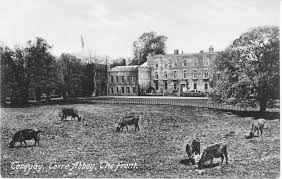
There’s no doubt that the Spanish Barn was overcrowded and some of the prisoners did die from wounds, privation or exposure during their stay. Yet, only around 15 Spaniards lost their lives between arriving at the Spanish Barn and when they were counted again – presumably some would have been wounded during the capture. But they were not murdered because they were a valuable commodity. Indeed, negotiations to ransom the prisoners began shortly after their arrival in England. By the close of 1589 the majority of them were officially freed – Don Pedro de Valdés was released in February 1593 upon payment of a ransom of £3,550. The contrast in treatment Spanish prisoners received from the English depended on where they were captured. Spanish officers and crew taken in the Channel or wrecked on the Scottish coast seem to have been treated with consideration and quickly repatriated. On the other hand, those taken by the English in Ireland after escaping from their foundering ships were all executed, other than very senior officers.
The best known of the legends to come out of the incident is, of course, that of the Spanish Lady – the question is whether the ghost dates from the actual event or whether it was a much later invention. The first recording of the story appears to be by JT White – 300 years after the event – who, indicating his Victorian middle class disdain for vulgar rural folk tales, ascribed it to those “village gossips” mentioned earlier. He goes on to briefly mention the, “Spanish lady, whose devoted attachment to an officer of the expedition induced her to don male attire in order to join the armada, shrouded in a gracefully flowing mantilla, may also at times be seen gliding along the lane. The spectre, however, very discreetly retires on the approach of a wayfarer.”
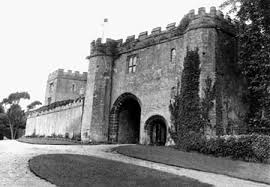
By the early 20th century these brief few lines of the Spanish Lady legend had been transformed into Gothic melodrama, as in the book ‘Tales of Torquay’. Now we have, “serenading and stolen meetings in the glamourous atmosphere of Andalusia” before our tragic couple found themselves suffering alongside their compatriots in, “cramped and unhealthy quarters… It was little wonder that sickness broke out amongst them. The poor little flower of southern Spain quickly faded in this dreadful place, and a last parting took place between the lovers.” Though it seems very unlikely in staunchly Protestant Elizabethan Torbay, there was fortunately a Catholic priest who, “resided in the ruined Abbey” and who was “permitted to administer the last rites, but her troubled spirit found no rest… it is still to be seen drifting slowly and rather wearily through the Abbey park towards the Spanish Barn”.
So how much do we really know about the legend?
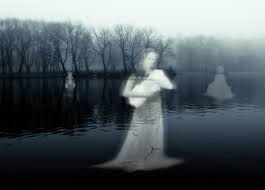
First of all we’re not alone in having a resident wandering female ghost – there’s another similar spirit at Berry Pomeroy Castle, though that apparition is a little more malevolent and lures folk to their deaths. Indeed, the Spanish Lady is our version of the White Lady archetype. Such supernatural White Ladies can be found throughout the world, and in many cultures, and are usually associated with the tragic loss of a loved one.
On the other hand, these do differ in character. In Holland and Germany they were said to be healers and gentle spirits – German legend has them appearing at noon, beautiful in the bright sunlight, while the Dutch have these spectres haunting graveyards at night. In Ireland and Britain, however, they can be more sinister as wailing women in white are said to foretell death. In Mexico, the La Llorona legend has it that women in white drowned their children, and lurk by water to drown more. Yūrei, in Japan, are vengeful spirits attached to certain objects or places and which attack passers-by (see below).

The story of a woman dressing as a man and serving as in the armed forces is quite common in ballads of the eighteenth and nineteenth centuries. Indeed, there are a number of cases of a woman dressing as a boy in order to go to sea with her lover, she acting as his cabin boy.
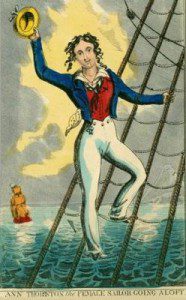
These incidents would also be well-known. Thomasina Clarke, for example, was uncovered way back in 1665. As Army Private Clarke she served in the same regiment as her husband for nine years, until the birth of a son unmasked her – in 1655, Thomasina was commemorated in a ballad, ‘The Gallant She-Soldier’. Further, in 1847 the British government decided that Queen Victoria would award a Naval General Service Medal to all living survivors of the major battles fought between 1793 and 1840. Mary Ann Riley and Ann Hopping, who had been aboard the Goliath during the Battle of the Nile, and Jane Townshend who was aboard the Defiance at Trafalgar in 1805, applied. Closer to home is the Brixham case reported in Freeman’s Journal of July 1841.
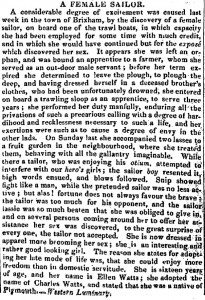
For a more modern reference to cross-dressing sailors we have the 1963 movie ‘Carry On Jack’ where Albert Poop-Decker (Bernard Cribbins) joins Nelson’s frigate Venus at Plymouth. He is joined by a serving maid, Sally (Juliet Mills) who goes to sea to find her shanghaied boyfriend by disguising herself in Albert’s midshipman’s uniform.
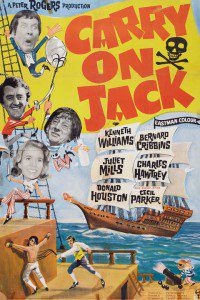
In addition to joining the army or navy to remain with a partner, there were other reasons for women to cross-dress in the nineteenth century. These could include: to get a man’s job at a man’s wage; to ensure anonymity or avoid recognition; to go where it would be unsafe for a woman; or to evade creditors. There was some risk as impersonation seems to be illegal as we can see from court reports that show women being charged with “assuming male attire”.
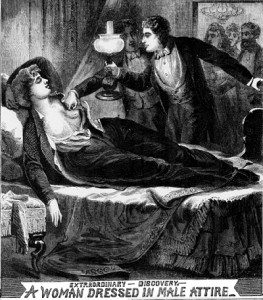
During the latter twentieth century cross-dressing came be be seen as an outward sign or display of lesbianism. Yet, it’s been suggested that it wasn’t until the obscenity trial of Radclyffe Hall’s 1928 novel ‘The Well Of Loneliness’ that cross-dressing and lesbianism became linked in the public mind. Unusually for the time, the novel’s main character’s “sexual inversion” is portrayed as natural and the plea is to, “Give us also the right to our existence”. Predictably, the novel became the target of a campaign by James Douglas, editor of the Sunday Express newspaper, who wrote, “I would rather give a healthy boy or a healthy girl a phial of prussic acid than this novel.” Despite its only sexual reference consisting of, “and that night, they were not divided”, the court judged it obscene because it defended “unnatural practices between women”. For decades it was the best-known lesbian novel, but its description of lesbians as “mannish” cross-dressers has attracted criticism.
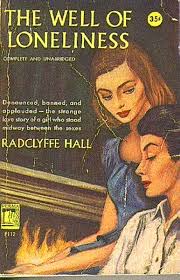
Accordingly, local people would have been very familiar with the idea of women on board ship being disguised as men. Folk songs and stories were a primary way of passing information and morality lessons from one generation to another in a society where many people couldn’t read – see below. So it wouldn’t have taken much for the local story of the Spanish prisoners to be conflated with the White Lady ghost archetype and that of the female rambling sailor:
…



